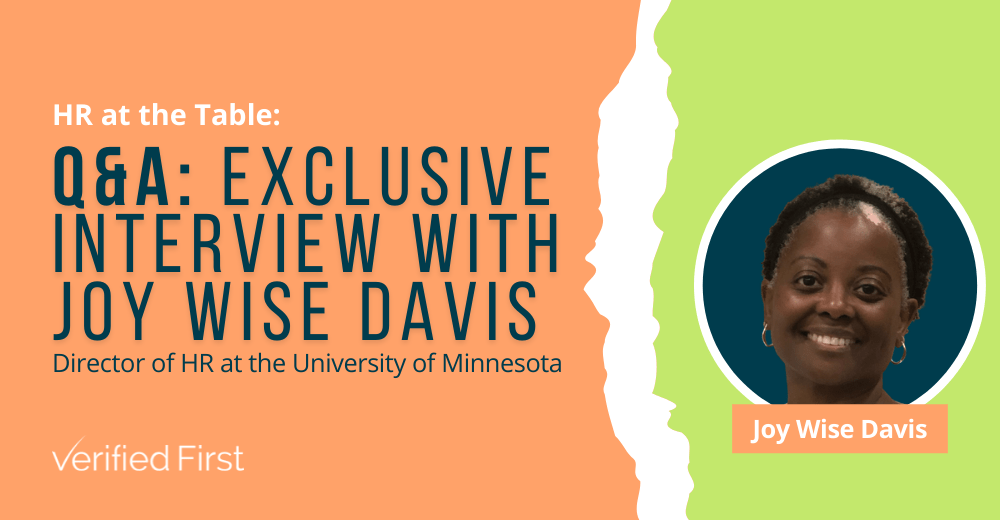
Company culture and brand are becoming increasingly important considerations for job seekers and employees. In episode four of our HR at the Table webinar series, we hosted Prestige Care’s Director of Talent Acquisition, Blake Thiess, to discuss how the HR trifecta for return involves three components: brand, technology, and talent. When optimized to create a winning talent acquisition brand strategy, the three impact recruitment, retention, and the overall candidate experience. To add to the discussion, we hosted the University of Minnesota’s Human Resources Director, Joy Wise Davis, to discuss where company culture fits into the mix.
In episode five of HR at the Table, Joy shared how binding culture, talent, and technology impact your talent acquisition and retention success. Joy answered our burning questions, including:
“Not everybody walking through the door is in lockstep with where the organization wants to go, but I feel as though if our branding, our messaging, is who we are, then applicants can make an informed decision about determining if this is the place they want to be.”
“If this vision or mission isn’t important to a candidate, if those things don’t resonate with them, then they’re probably not going to have a great time at the organization.”
“Help [employees] see they fit into the bigger picture. Show them how their role will impact their department, organization, city, state, etc.”
“What does our branding look like? What does our interface look like with an applicant? Is it easy? Is it fresh? Does it display how we are a mission-driven organization? Hopefully, it’ll attract individuals who want to be a part of a mission-driven organization, those who want to be a part of something bigger than themselves.”
“We are the center — although we certainly don’t do it alone. We need everyone to be a brand ambassador for the organization.”
“Once an individual gets into the organization, HR is often the first people they meet. We are the ones that guide them through. HR is really that first point of contact and the first impression they get of the organization.”
“When things are being pushed from a central human resources standpoint, think about how this is going to impact employees and clients. Stakeholders carry a lot of weight and we need to pull them together.”
“Oppression can be found in policies, matter of fact, often lives in policies. We need to represent the communities we serve. People want to see folks that look like them, but when they leave we realize we didn’t focus on the retention piece. We want everyone to feel welcomed and included but we want that to be sustainable. How do we put systems in place to sustain and retain a diverse community? Review policies through a DE&I lens.”
“People don’t always have access to tech. So how do you reach those folks? How do you make sure that you’re covering all those bases? Get back to what we did before all this tech. You’re being accessible and approachable. You’re utilizing the folks within your shop to go out and find folks. When I was a recruiter, my business card was all over this city. [Finding talent] was based on relationships.”
“Demographics are changing. Are we able to communicate in the different languages that are out there? Are we able to communicate with different cultures? If we say we want an inclusive environment, are we really being inclusive in our messaging? Are we really welcoming everyone?”
“Individuals may not have access to tech. There are people out there that believe in our mission, that believe in wanting to do the right thing, wanting to be a part of an organization like ours, but don’t have access. We had 4-5 days to switch everything online. What we found is, some people didn’t have the tech at home. We had to get people hotspots, laptops, internet connection…”
When culture exists within the brand, technology, and talent conversation, it acts as a guide for the type of talent needed to support your organization’s mission and how to best engage and retain them through various means, like technology.
For more thoughtful insight from Joy, watch episode five of HR at the Table and register for our next HR at the Table episode on the State of Talent Acquisition Technology: 2021 Trends.